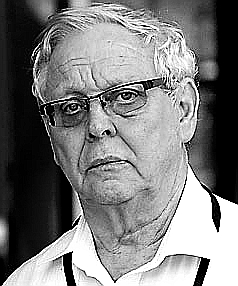Sham engineer plied dodgy trade statewide
 It has been revealed that a fake engineer worked on projects in Queensland using a false name and qualifications.
It has been revealed that a fake engineer worked on projects in Queensland using a false name and qualifications.
Some projects will have to be completely reassessed, after it was found that shame engineer Gerald Shirtcliffe was involve in them,
Shirtcliffe has been a central part of the New Zealand royal commission into the Christchurch earthquakes in 2011. Investigators have queried his role supervising the construction of the CTV building, which collapsed during the earthquake, killing 115 people.
It now turns out that the same man has been working as a registered engineer in Queensland under an identity he stole from a former colleague, a legitimate British engineer with whom he shared a flat in the 1960s.
He has reportedly pleaded guilty to 146 charges, including carrying out professional engineering services while not a registered engineer and making “false and misleading” statements to the Board of Professional Engineers of Queensland.
Shirtcliffe was fined $500,000 as well as $20,000 in professional costs, but was allowed to walk free from court.
“You knew you were not entitled to be registered,” Magistrate Paul Kluck told Shirtcliffe.
“You allowed yourself to be held out as a registered professional engineer and you used that title.”
Shirtcliffe worked on several major projects for engineering firms Worley Parsons Limited and Sedgman Limited in Queensland.
He was involved in coal projects at Maules Creek, Codrilla, Boggabri, Lake Vermont and Caval Ridge, as well as the southern expansion of Mount Isa Mines’ Black Star open cut mine in outback Queensland and New Auckland in Gladstone.
Worley Parsons says its “extensive review of [Shirtcliffe’s] work... did not uncover any irregularities”.
A spokesperson for Housing and Public Works Minister Tim Mander, whose portfolio covers the BPEQ list, said Shirtcliffe’s employers are reviewing his work and so far have “reported no concerns”.
“The board is currently exploring options to investigate Mr Shirtcliffe’s prior work history,” he said.
English engineer William Fisher submitted an affidavit to the court saying he shared a flat with Shirtcliffe in South Africa in 1969, and that his University of Sheffield Bachelor of Engineering degree had gone missing at that time.
“To the best of my knowledge, in 1968 Gerald Shirtcliffe had no engineering work experience or qualifications,” he said in the affidavit.
“It was a fairly small office and although he was not directly working under me, I could see what he was doing on a daily basis.”
But the court heard Shirtcliffe used the stolen degree to enrol in a UNSW Masters program in 1973.
The university revoked the Master of Engineering Science in Highway Engineering, obtained by Shirtcliffe under Mr Fisher’s name, in 2012.
Both Shirtcliffe and the BPEQ agreed to a joint statement of facts, which was presented to the Magistrate.
“The nature of the offences are very serious and warrant a very high and substantial penalty. Indeed the offences are of the most serious kind that one may contemplate against the (Professional Engineers Act Queensland),” the submission stated.
“This is because Shirtcliffe – not being registered as an RPEQ and in circumstances where he took on an engineering degree awarded to someone else and then sought to adopt that person’s name in purporting to seek registration – carried out significant and complicated professional engineering services as a senior civil engineer with respect to large coal projects, mining projects and civil infrastructure projects.
“…The professional engineering work performed was of the most serious and complicated kind and called for a properly registered professional engineer to perform and supervise the work.
“Any deficiency in the engineering calculations, design and data with respect to this work could have had very serious consequences in terms of injury to persons, damage to property and/or with respect to the success of the engineering projects.”








 Print
Print